Best Kids Water Bottles
Trying to get your little ones to drink more water? Then check out our expert advice for what to look for in a kids’ water bottle, how to clean water bottles properly, tips for using water bottles, frequently asked questions, and our recommendations for the best water bottles for toddlers and kids ages 2-12.
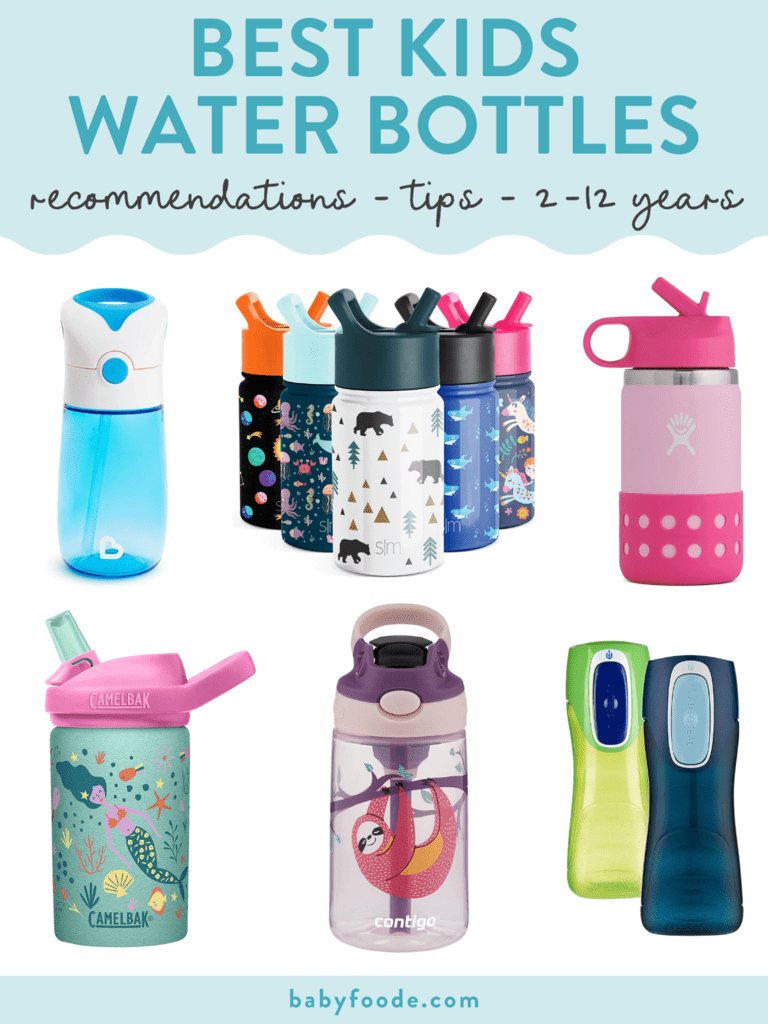
Medically reviewed and co-written by Lauren Braaten, Pediatric Occupational Therapist (OT).
Water Bottle for Kids
We often forget how important water is for our health. Drinking water helps regulate body temperature, digest food, and prevent constipation. Proper hydration has also been linked to improved short-term memory, alertness, and cognitive function.
As our bodies function throughout the day, we lose water. So it’s important to replace the water we lose to prevent dehydration. Staying hydrated is important for everyone, but particularly for kids. Compared to adults, kids have a larger proportion of their skin available to lose sweat and be exposed to heat. Also, kids may not recognize thirst as easily or forget to take water breaks.
For these reasons, we LOVE kids water bottles. When kids have their own water bottles, they are more likely to drink more water throughout their day. We’ll review some of our favorite kids water bottles to keep your little ones hydrated.
Reasons to Love Reusable Water Bottles for Kids
- Environmentally friendly
- Avoids potentially harmful chemicals from bottled water
- Saves money
- Teaches healthy habits
- Allows you to flavor your water
- Long-lasting durability
- Helps reduce consumption of sugar-sweetened beverages
What to Look For in a Kids Water Bottle
With so many types of kids water bottles available, you may be wondering how to choose one. Here are some factors to consider, depending on your child’s needs.
Material
A few popular choices for kids water bottles include stainless steel, plastic, or glass. For toddlers and younger kids, stainless steel or plastic is often the safer and tougher choice to handle drops and dents. Stainless steel is durable and food-grade safe, and is frequently used with doubled-walled insulated bottles, keeping drinks colder for longer.
Higher quality, reusable plastic water bottles are usually free of unwanted chemicals, such as BPA, BPS, and BPF. Plastic can be a lightweight choice for toddlers and younger kids as well as allows you to easily see how much water is left.
Size
Your child will be lifting and drinking from their water bottle throughout the day, so make sure the size of the bottle is manageable for their smaller hands. As adults, we might underestimate how big of a difference a few ounces can make for a toddler or young child, such as 10 oz compared to 16 oz.
Ease of Opening, Cleaning, and Assembling
Choose a water bottle that your child can open independently, so they can easily stay hydrated even at daycare or school. Think about ease of cleaning and re-assembling parts. Ideally, you’ll want to clean your kid’s water bottle daily, so less complicated pieces are better!
Type of Drinking Spout
Just as there are many types of water bottles, there are many different types of drinking spouts. For toddlers and younger kids, a straw-style water bottle can be easier to manage on-the-go than a twist-off cap. Water bottles that are spoutless (aka a small hole to drink through, often with a flip cap to close) or twist-off caps or lids are usually more appropriate for older kids.
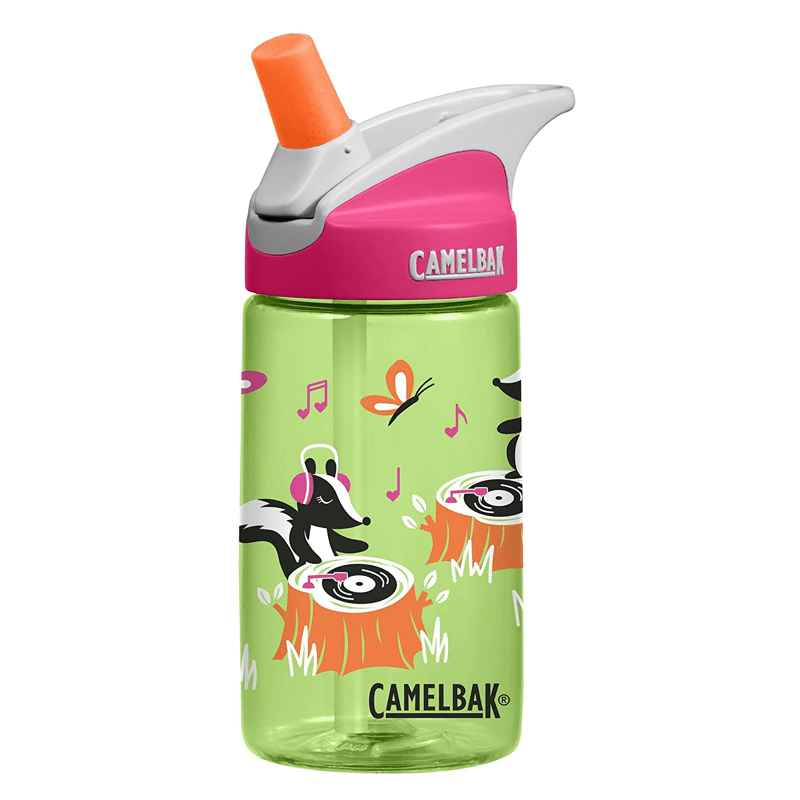

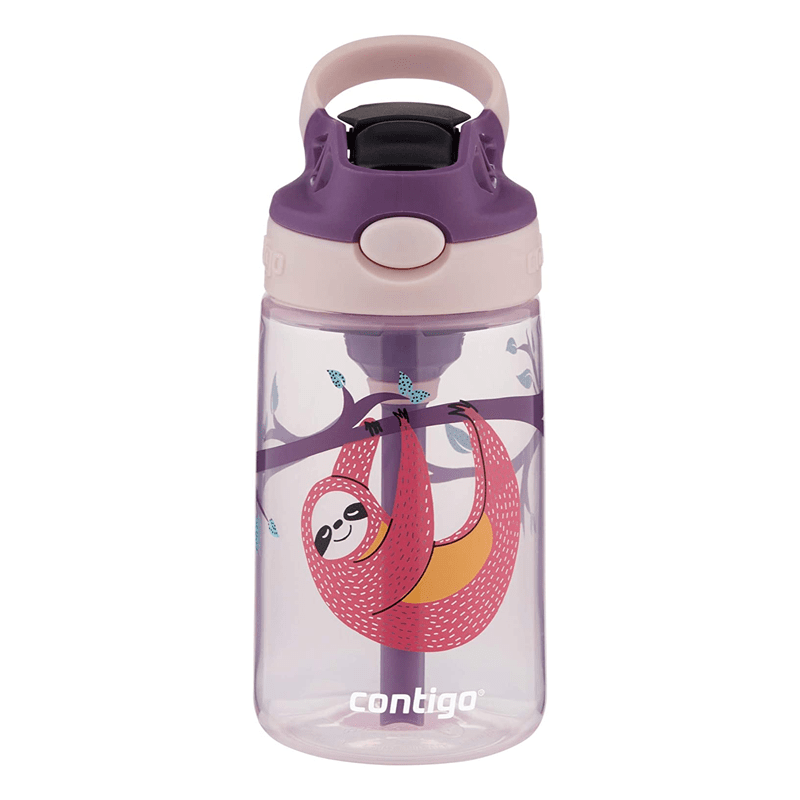
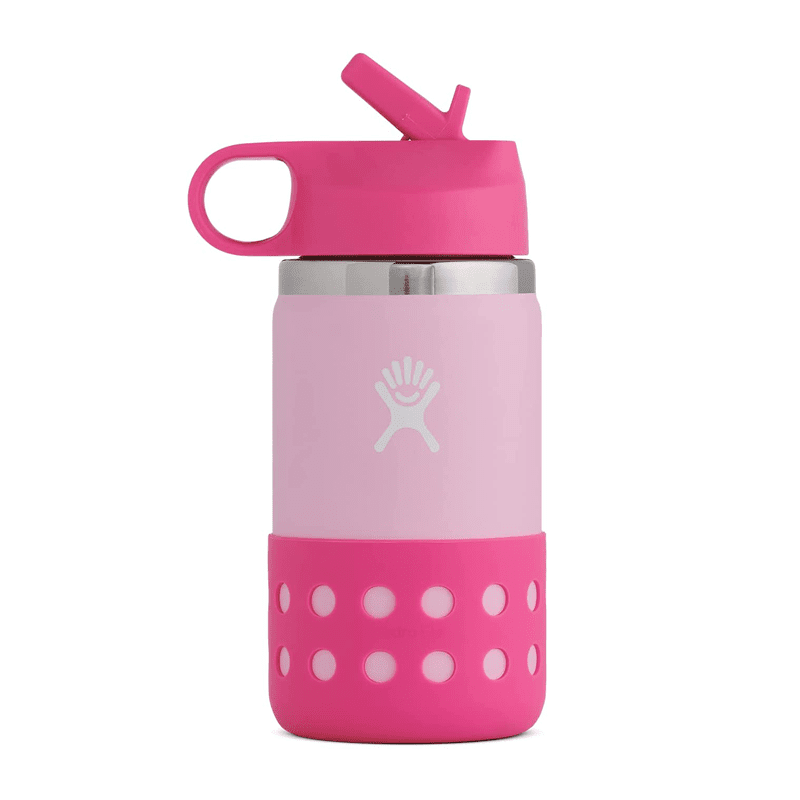
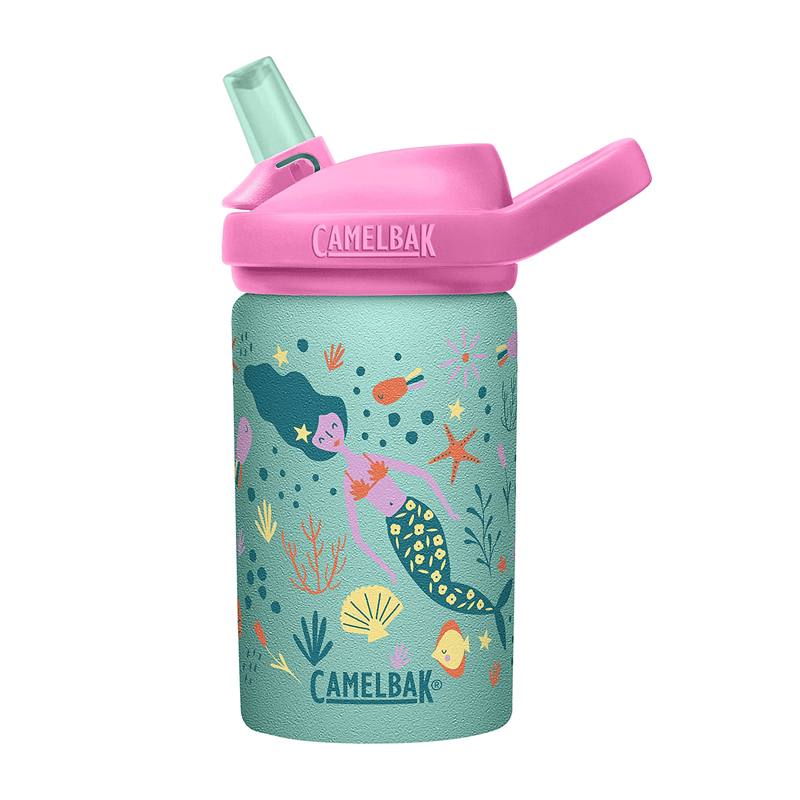
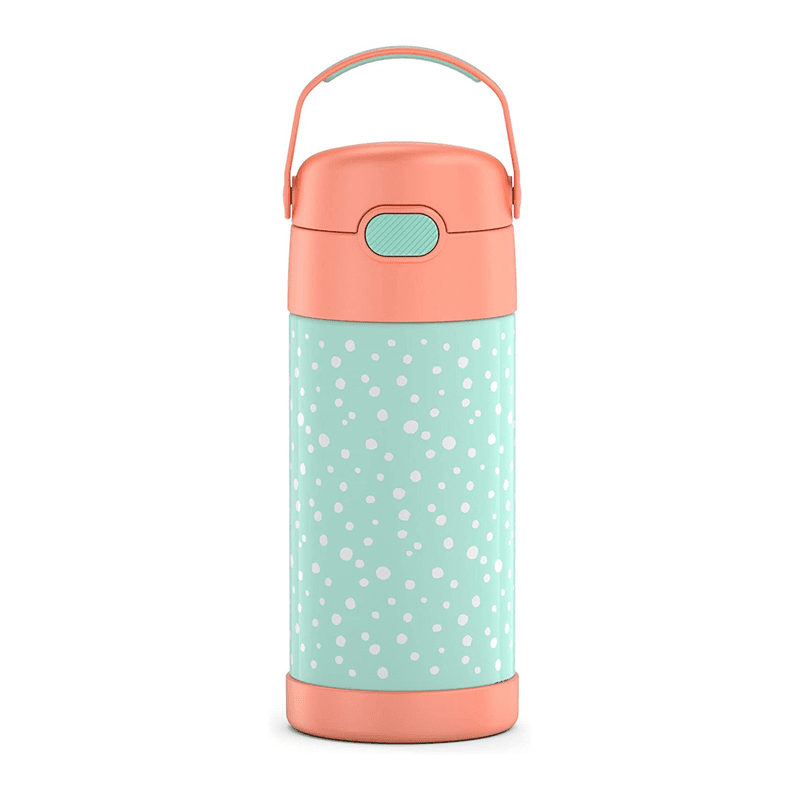
Best Toddler Water Bottles
- CamelBak eddy Kids Water Bottle
- THERMOS Stainless Steel Vacuum Insulated Kids Straw Bottle
- Munchkin Flip and Go Tritan Straw Cup
- green sprouts Straw Bottle
Best Kids Water Bottles
- Contigo Kids Water Bottle
- Simple Modern Kids Water Bottle
- CamelBak Eddy Stainless Steel
- Contigo Autoseal Trekker Kids Water Bottle
- Hydro Flask Kids Wide Mouth Water Bottle with Straw Lid
How to Clean a Water Bottle
To thoroughly clean your kid’s water bottle, use warm water and soap to rinse both the inside and the outside. Make sure to clean any nooks and crevices around the drinking spout, as well as within the spout or straw. Use a small cleaning brush that fits easily inside the straw and let all parts air-dry overnight.
If your water bottle specifies that it is dishwasher safe, you can also wash it this way. Make sure to let the water bottle and all parts air dry completely before using again.
Frequently Asked Questions
With toddlers and younger kids, always check for any parts that could become choking hazards, such as smaller twist off caps or pieces that could easily come apart. Periodically inspect your kid’s water bottle for signs of breakdown and replace as needed.
If used every day, you should clean your kids water bottle regularly, ideally daily. Bacteria love warm, dark, and moist environments, so any traces of water in the bottle and around the drinking spout create potential for bacterial growth.
Stainless steel water bottles will keep liquids cold for longer than plastic or glass. The more layers of insulation (such as double walled versus single walled) between your liquids and the outside temperature will help keep water colder.
Although it’s hard to claim that any water bottle is 100% leak proof, many will greatly reduce or practically eliminate leaking, especially when assembled and used properly. Look for tight fitting seals, as well as lids or spouts that snap close or fold in securely.
Water recommendations vary by age. Kids under one year of age only need 4 to 8 oz per day. Children 1-3 years old need about 4 cups of beverages each day, primarily water and milk (limit juice). According to the Academy of Nutrition and Dietetics, boys and girls 4-8 years old need 7 cups per day. Girls and boys 9-13 years should drink 9-10 cups per day. Keep in mind this includes total water intake from water, other beverages, and foods like fruits and vegetables, so actual cups of water may be less.
Tips for Using Kids Water Bottles
- Try adding slices of fruit, such as lemon, strawberry, or orange for variety and flavor
- Always offer water with meals and snacks
- Encourage your child to drink water before, after and during physical activity
- Schedule regular times for “water breaks,” especially during hot weather
- Be a good role model and show your kids that you drink water frequently throughout the day
- Help older kids get in the habit of being responsible for filling and packing their own water bottle in their school bag
- Encourage kids to drink more water by placing a rubber band around a clear water bottle. Give your child a challenge to “drink to the line” instead of asking “can you drink more?” This gives a visual cue of how much to drink.
Best Kids Water Bottles
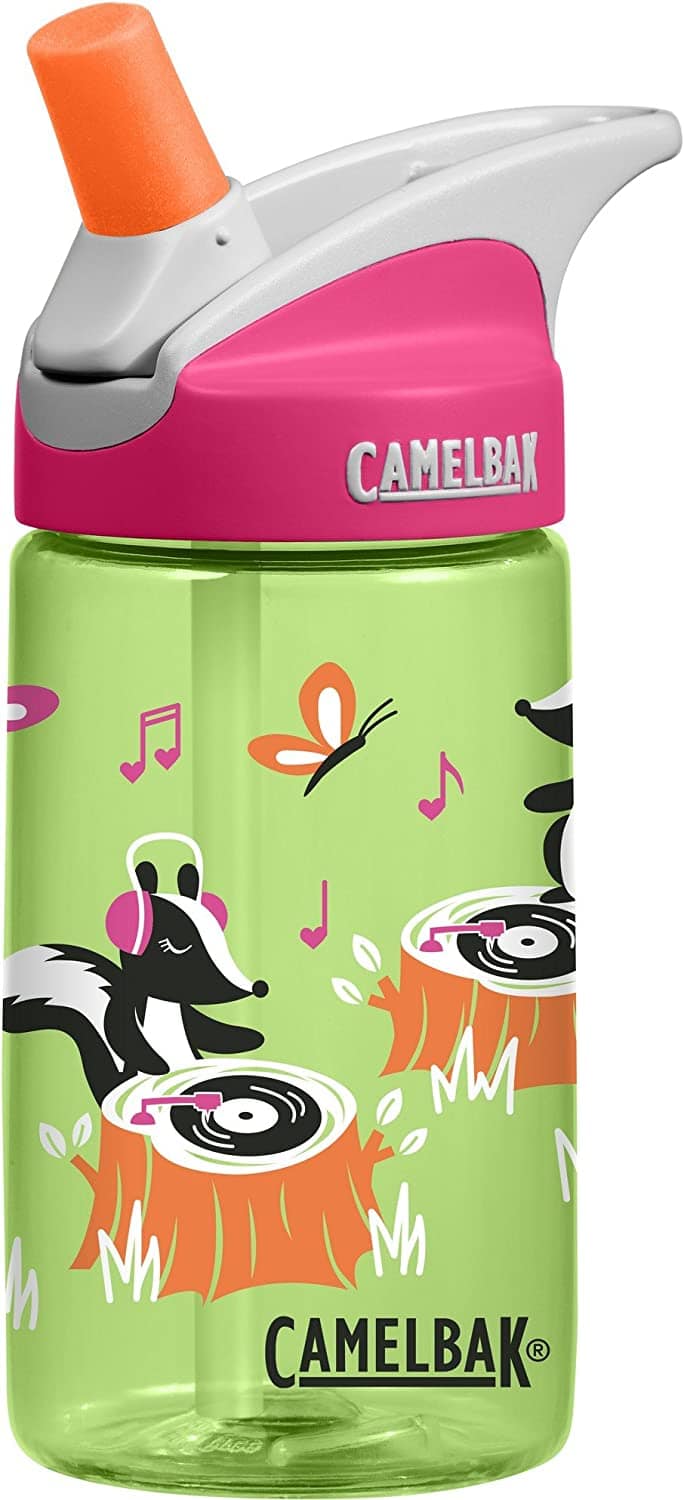
CamelBak eddy Kids Water Bottle
The Camelbak Eddy 12 oz Kid’s Water Bottle is specifically designed for smaller hands to use. It features easy to use parts and is made from high quality, safe, and easy to clean materials.
- Patented camelbak bite valve with a stem tube and shut off valve
- Detachable one-piece component is simple for kids to use and easy for parents to clean
- BPA, BPS and BPF-free and dishwasher safe

THERMOS Stainless Steel Vacuum Insulated Kids Straw Bottle
With THERMOS vacuum insulation technology, this kids water bottle keeps drinks cold for up to 12 hours! High quality 18/8 stainless steel construction is built to handle drops, dings and assorted roughhousing.
- 12 oz, kid-friendly design is lightweight, compact and easy to carry
- Button lid is easy to push open
- Dishwasher safe (although hand washing is recommended)
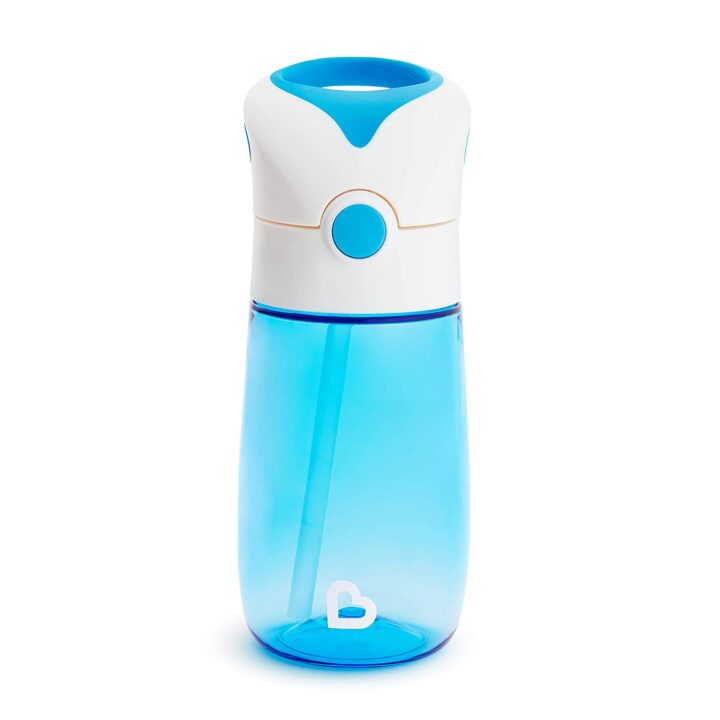
Munchkin Flip and Go Tritan Straw Cup
The Munchkin Flip and Go 12 oz straw cup is made of extra durable Tritan material built to withstand pretty much anything your child can throw its way. It flips open with the touch of a button.
- Valve-free, soft silicone straw provides full liquid flow and easy drinking for toddlers and young kids
- Spill-proof cap ensures leaks are contained
- Built-in carrying handle in lid
- Top rack dishwasher safe and BPA free

green sprouts Straw Bottle
This straw cup is a great choice for younger toddlers due to its lightweight, 10 oz capacity. Available in 3 different colors and designs.
- Easy to disassemble and clean
- Simple flip-cap locks to prevent spills and allows toddler more independence
- PVC and BPA free
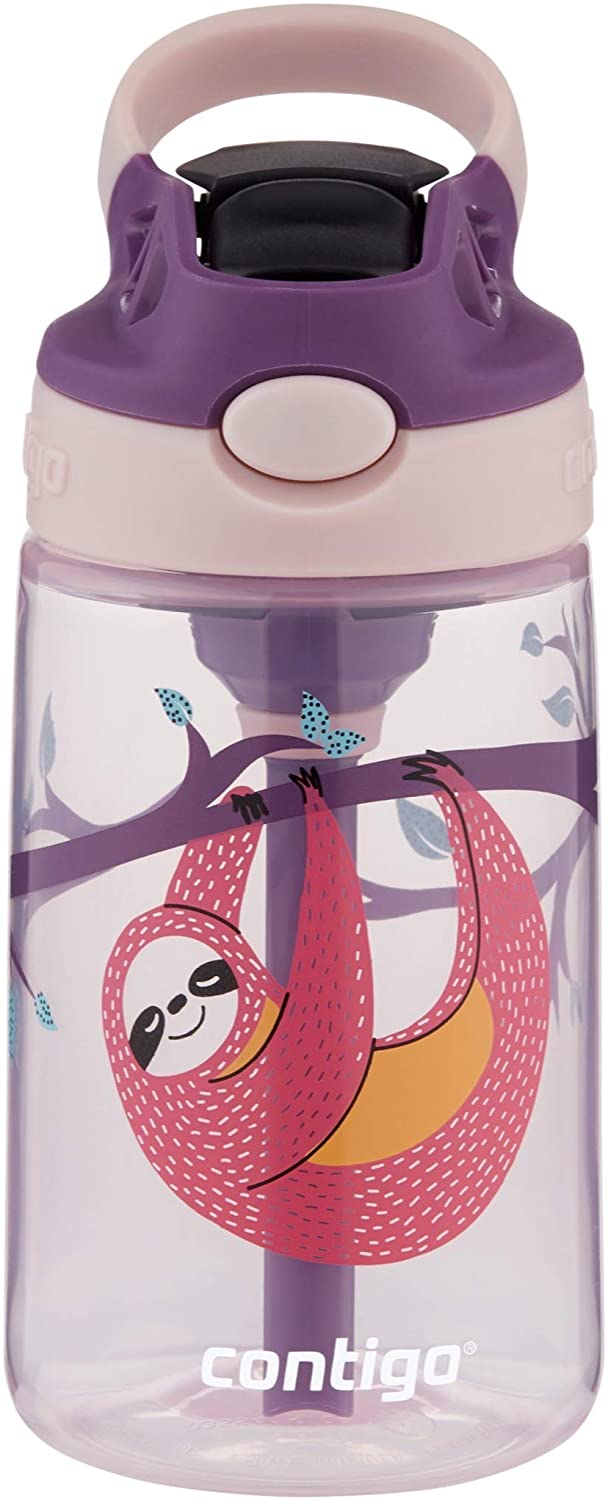
Contigo Kids Water Bottle
The Contigo Kids Water bottle offers effortless one-handed drinking with the push of a button. Parents will appreciate the easy to clean lid and smartly designed spout that eliminates cracks and crevices where dirt and germs might hide.
- 14 oz capacity cup comes in a variety of fun designs and colors
- Pop-up straw features a spill-proof valve that prevents spills even when spout is open
- BPA-free lid and body are top-rack dishwasher-safe
- For ages 3+ years

Simple Modern Kids Water Bottle
These durable kids water bottles are vacuum insulated and double-walled, keeping drinks cold for up to 14 hours! We love that you can switch out the straw lid for a flip lid (sold separately) for different drinking options.
- BPA-free straw lid is leak-proof with nozzle in the closed position
- Many designs and colors available to choose from
- Available in 10 oz or 14 oz sizes for different ages
- Dishwasher safe for easy cleaning
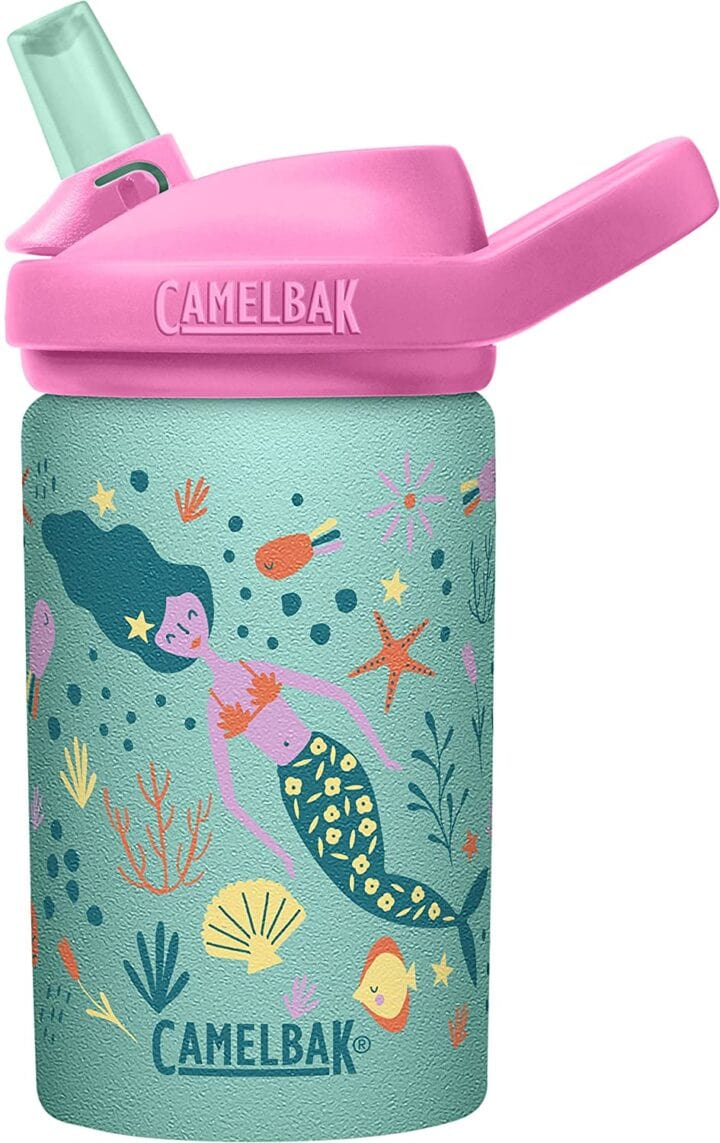
CamelBak Eddy 14oz Stainless Steel
This single wall stainless steel water bottle is durable and easy to use. It’s spill-proof when open and leak-proof when closed.
- Comfortable handle makes it easy for kids to carry
- Cap and vessel are dishwasher safe
- BPA, BPS and BPF free
- For ages 3+ years
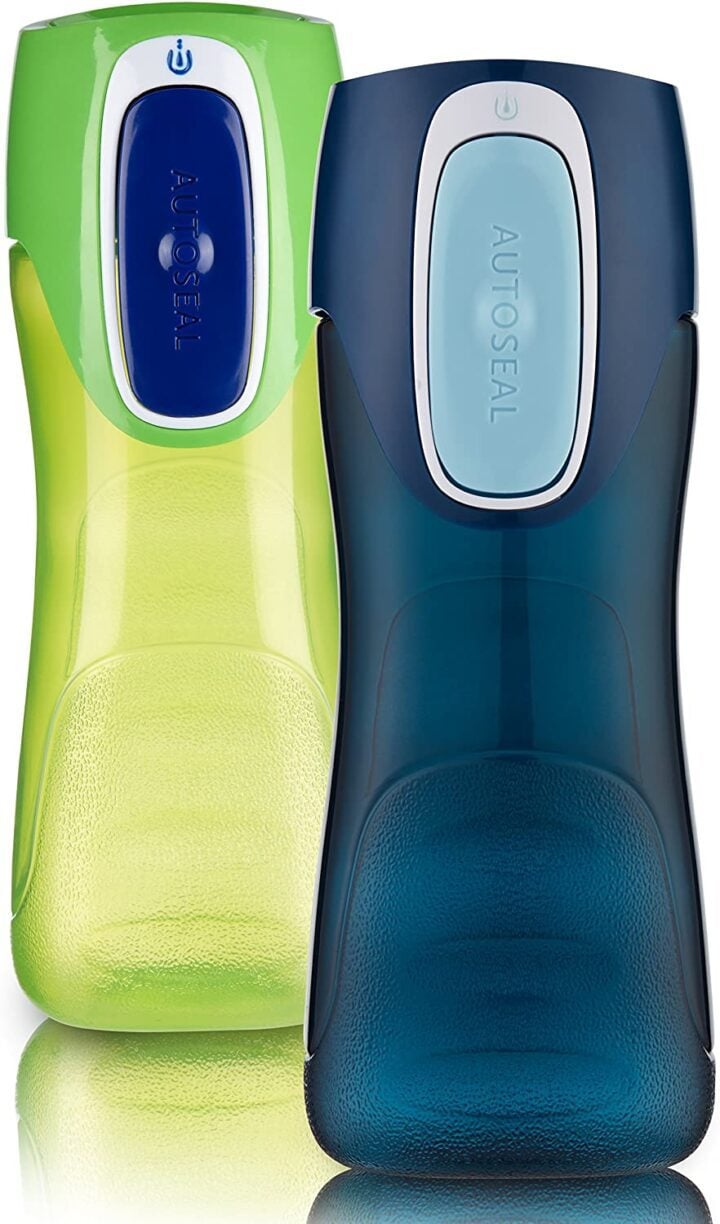
Contigo Autoseal Trekker Kids Water Bottle
The Contigo Trekker features the one-touch AUTOSEAL lid that automatically seals between sips for mess-free drinking.
- 14 oz capacity is a perfect size for young kids and fits most car cup holders
- Top rack dishwasher safe lid and body
- BPA free
- Recommended for ages 3+ years
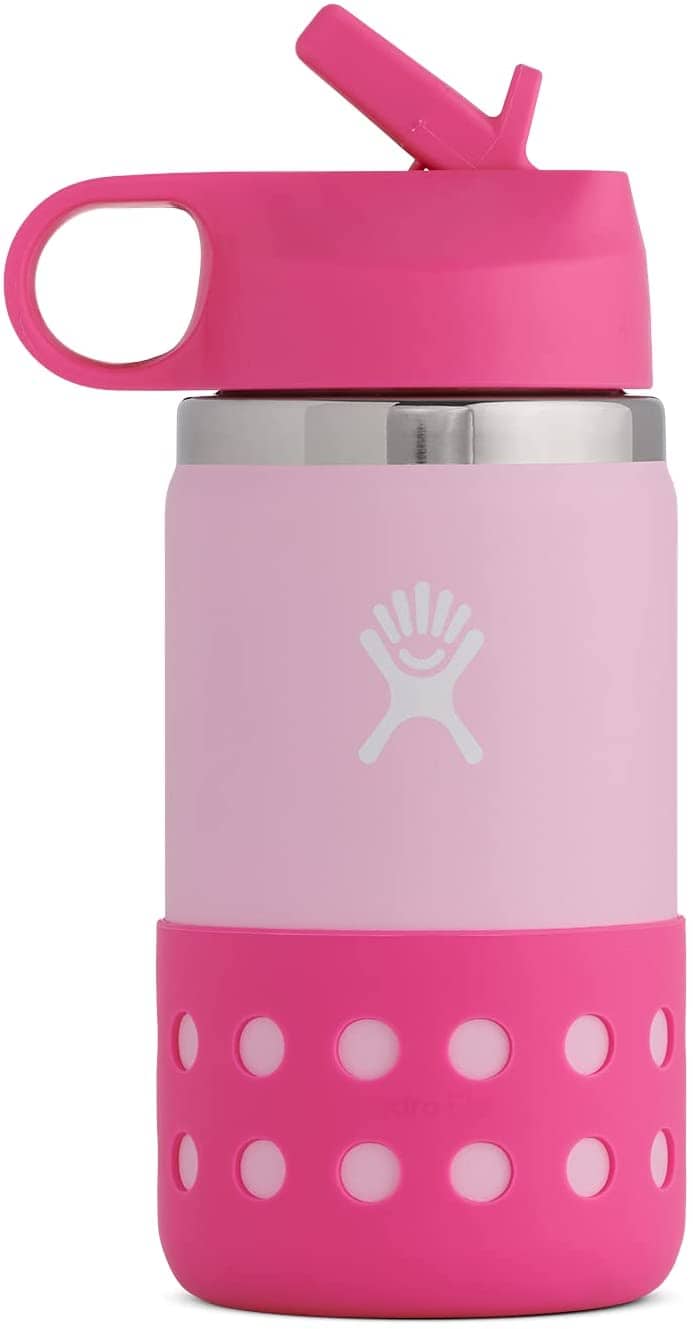
Hydro Flask Kids Wide Mouth Water Bottle with Straw Lid
This water bottle holds 12 oz of liquids that will stay cold for up to 24 hours! The Hydro Flask water bottle has a perforated flex boot for added protection and an easy grip.
- Double walled vacuum insulation
- Easy sip straw lid
- Dishwasher safe
- For ages 3+ years
